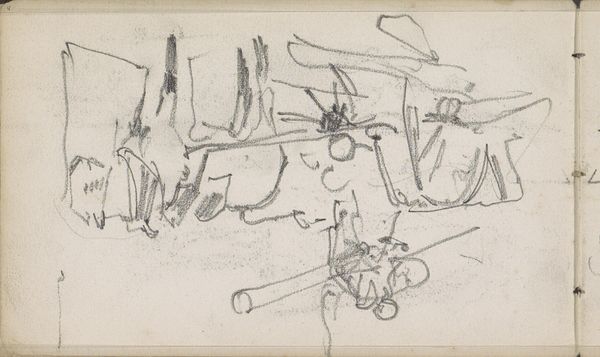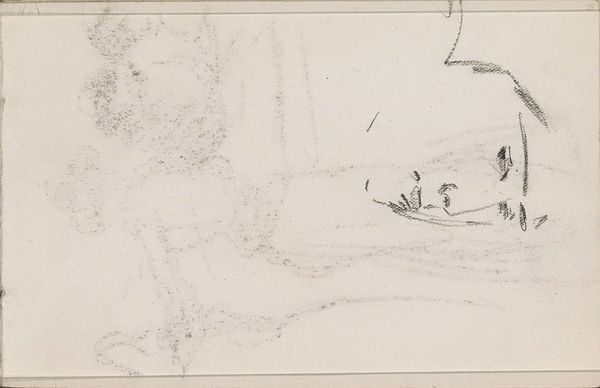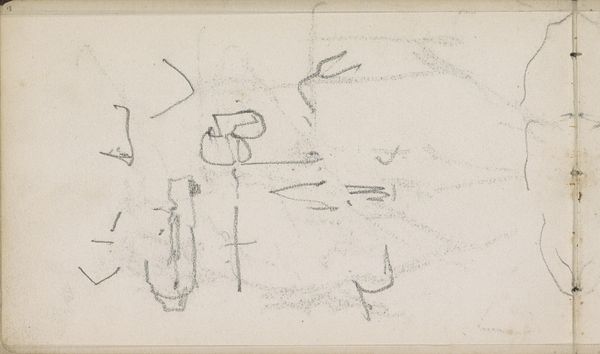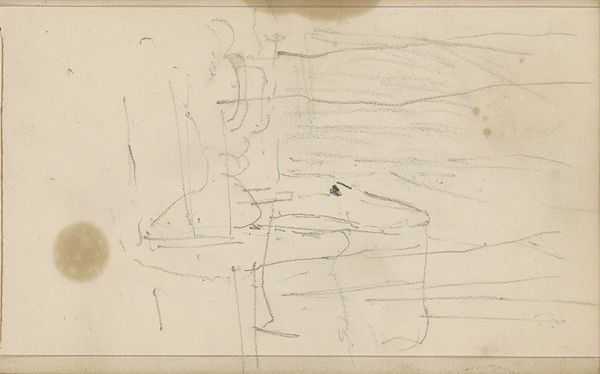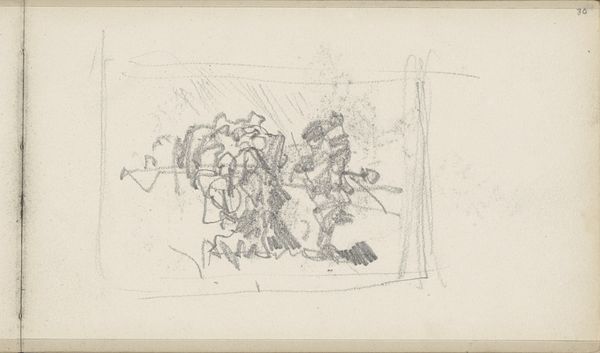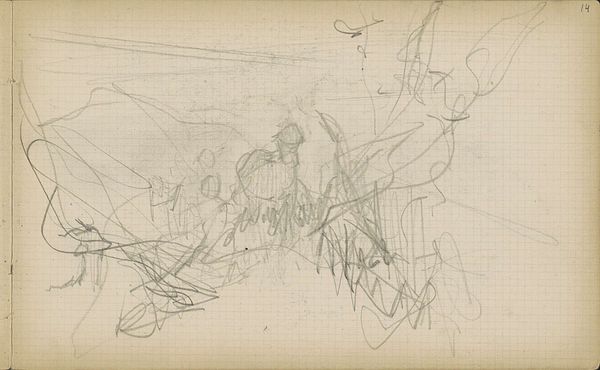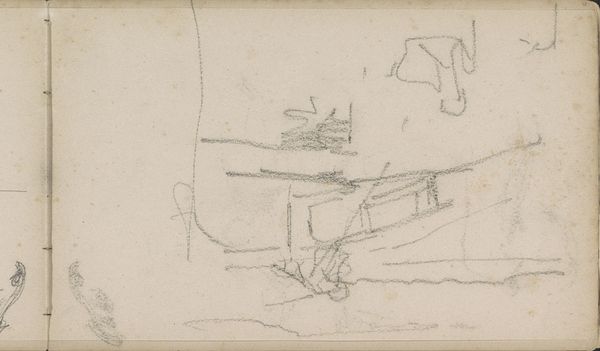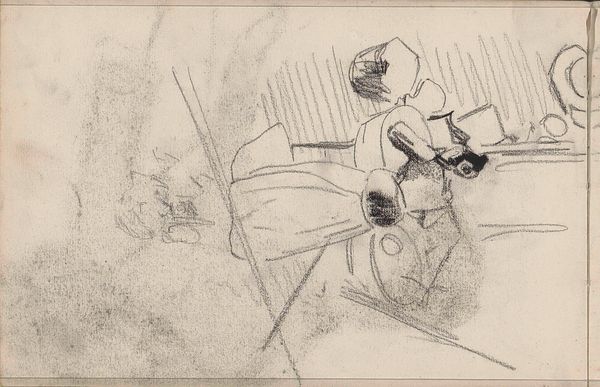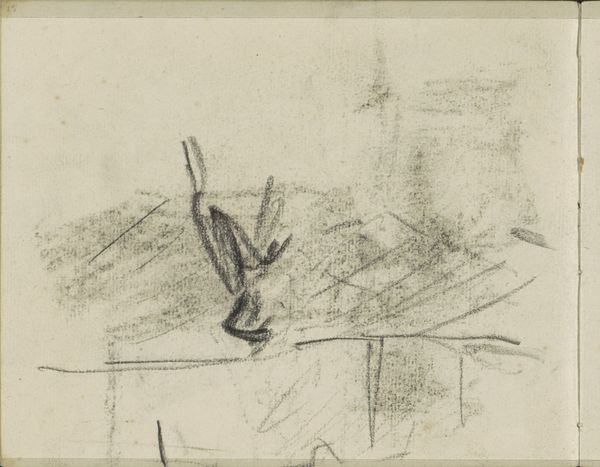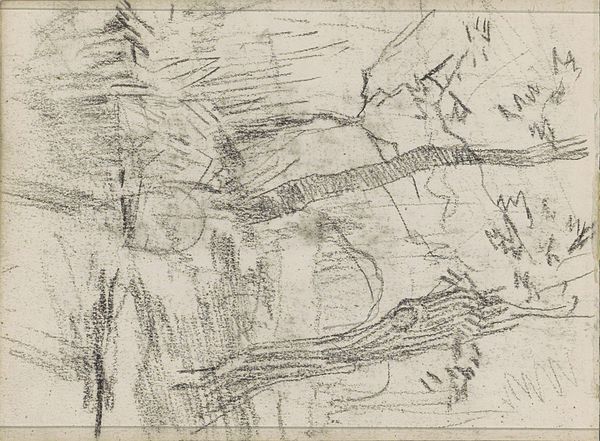
drawing, paper, pencil
#
drawing
#
impressionism
#
landscape
#
figuration
#
paper
#
pencil
Copyright: Rijks Museum: Open Domain
Editor: This is "Studieblad" by George Hendrik Breitner, created sometime between 1881 and 1883. It's a pencil drawing on paper. There's a looseness and immediacy to the marks that gives it a very ephemeral feel. What do you make of it? Curator: Its sketch-like quality certainly privileges line and form over precise representation. The work appears almost incomplete, foregrounding the artistic process itself. Note the layering of lines, their varied pressure, and the overall economy of means. Editor: I see how the layering creates depth even with such minimal lines. But is it really that minimal? Look at the figure, repeated a few times near the top, almost ghostly. Is there something specific that you can deduct from the materiality and the choices the artist makes? Curator: Precisely. The "ghostly" repetitions could suggest the artist exploring different compositional possibilities, searching for the optimal form through iterative refinement. It’s the tension between representation and abstraction that I find most compelling. How do you feel this contributes to the overall artistic effect? Editor: It's interesting you point out that tension. I think the incompleteness gives it a feeling of potential. It feels dynamic, as though the scene could shift and change at any moment. It doesn't quite allow one to form a certain response because its intent is less definite than a finished picture. Curator: An astute observation. By refraining from definitive closure, Breitner invites us, as viewers, into the creative space. We participate in the act of seeing and interpreting, actively constructing meaning from the skeletal framework he provides. A fascinating engagement, wouldn’t you agree? Editor: Definitely. Focusing on just the artistic components of the drawing highlights how much can be conveyed through simple lines and composition choices.
Comments
No comments
Be the first to comment and join the conversation on the ultimate creative platform.


